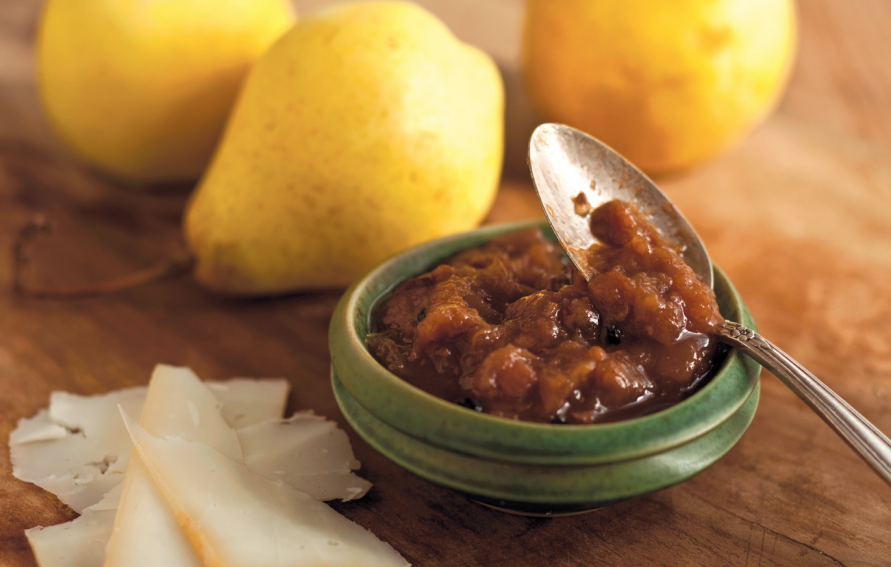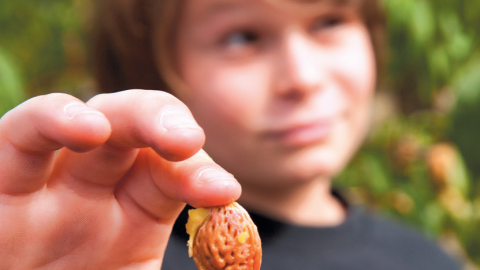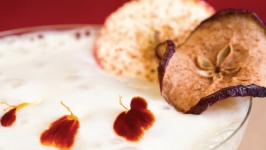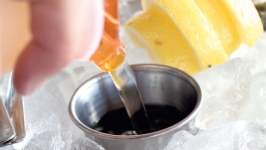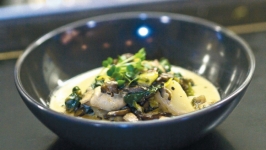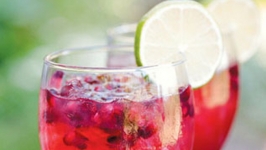Ingredients
- 2 pounds stone fruits such as plums, nectarines or Pluots, pitted and coarsely chopped
- 1 pound apples, cored and coarsely chopped
- 8 ounces yellow onions, coarsely chopped
- 4 cloves garlic, minced
- 1⁄3 cup firmly packed light brown sugar
- 1 (2-inch) piece fresh ginger, peeled and minced (about 2 tablespoons)
- 1 teaspoon sea or kosher salt
- 1 cinnamon stick, about 2 inches long
- 2 teaspoons minced lemon zest
- 1 cup cider vinegar
- 1⁄2 green jalapeño or other hot chile, seeded and finely chopped
- 1 tablespoon black peppercorns
Instructions
You will need two pint canning jars with lids and rings; a canning kettle with a rack and cover (or a large, wide pot with a wire rack) for the water bath; a large, heavy nonreactive pot for cooking the chutney; canning tongs and a ladle.
In the large, heavy nonreactive pot, combine all of the ingredients and bring to a boil over medium heat. Reduce the heat to low and cook, stirring occasionally to prevent scorching, until all ingredients are soft and blended, about 3 hours. Once the mixture starts to thicken, stir more frequently to prevent burning.
Meanwhile, set up the water bath. Fill the canning kettle with water (the water must be deep enough to cover the jars by 1 to 2 inches) and bring to a boil over high heat. If you don’t have a canning kettle, use a large, wide pot and put a wire rack in the bottom of the pot before you fill it with water. Once the water boils, you can turn off the heat and then return it to a boil just before you put the jars in the kettle.
Wash the canning jars in hot, soapy water and rinse well. Place the jars in a saucepan, add water to cover generously and bring to a boil over medium-high heat. Boil for 15 minutes, then turn off the heat and leave the jars in the hot water until you are ready to fill them.
Fill another saucepan half full with water and bring to a boil over medium-high heat. Add the canning lids and rings and boil for 5 minutes. Turn off the heat and leave the lids and rings in the hot water until needed.
Just before the chutney is ready, using tongs, transfer the jars to a work surface. Return the water in the canning kettle to a boil. Ladle the hot chutney into the hot, sterilized jars, filling them to within 1⁄2 inch of the rim. With a clean, damp cloth, wipe the rim of each jar. Place a lid on the rim and then screw on a ring, being careful not to screw it on too tightly. Using canning tongs, put the filled jars into rack of the canner and lower the rack into the boiling water. If you are using a large, wide pot, use the canning tongs to lower the jars onto the rack in the bottom of the pot, making sure the jars do not touch. Return the water to a rolling boil, reduce the heat slightly, cover and boil for 10 minutes.
Cover a work surface with a folded towel. Using the canning tongs, transfer the jars to the towel, spacing them a few inches apart. As the jars begin to cool, you may hear popping sounds, which is the sound of the lids sealing. The lids should be indented. When the jars are completely cool, after at least 12 hours, check the seal on each jar by pressing on the center of the lid. If it remains indented, the seal is good. If it does not, refrigerate the jar and use the chutney within 1 month.
Label the jars with the contents and date and store in a cool, dry place for up 1 year.
Adapted from The Davis Farmers’ Market Cookbook by Georgeanne Brennan and Ann M. Evans (Mirabelle Press, 2012)

